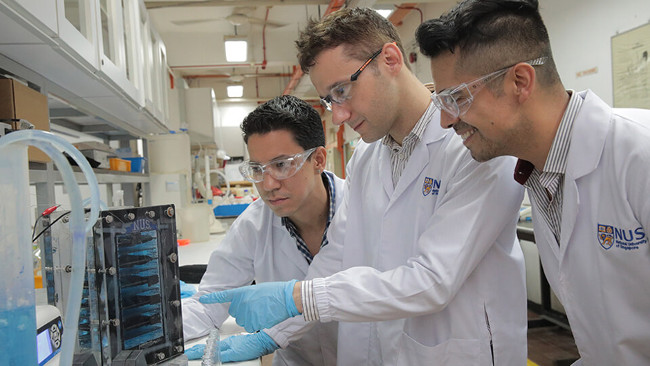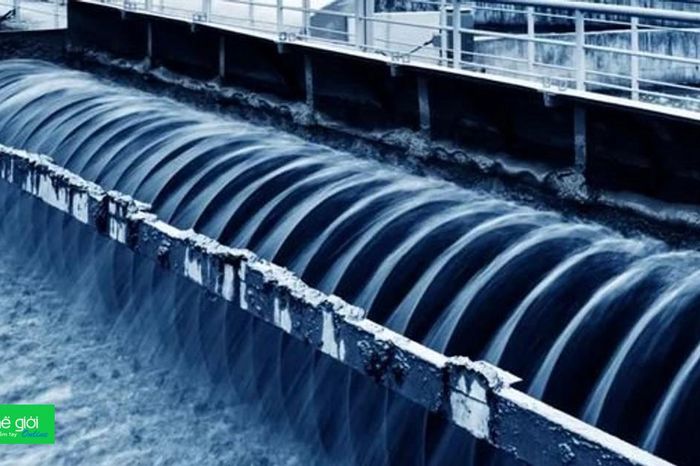High-class electrical system helps release polluted wastewater
Scientists from the National University of Singapore have developed an electrochemical method to treat industrial wastewater, using electricity as a pure substance for cleaning.
NUS believes that this method can eliminate up to 99% of difficult-to-treat organic compounds, found in different types of industrial wastewater. Furthermore, the system is supposed to operate with low power and does not produce secondary waste such as mud, which does not create more excess waste such as burning.
"Despite significant progress in wastewater treatment technology, the removal of refractory organic compounds is still a costly and challenging process. Our invention provides a solution. It is environmentally friendly and helps to raise the standards of industrial wastewater treatment , ' said Professor Olivier Lefebvre, researcher of the Department of Environmental Engineering of the NUS Department of Engineering.

Wastewater from the electronics and pharmaceutical industries may contain a large amount of complex solvents and mixtures, while waste water from agricultural land may contain a large amount of pesticides or drugs. herbicide. These organic compounds are not biodegradable and can be harmful to humans and the environment.
"Our electrochemical system has shown that it can achieve complete mineralization of any organic contaminants. This means that the system can completely remove organic compounds in wastewater by decomposing them into water and carbon dioxide.
This new system can also be combined as a pretreatment method for an existing wastewater treatment program. It works with low power and this system can be easily combined with solar energy and other refining methods such as membrane use and biological treatments, " Asst Prof Lefebvre.
The system was developed by NUS scientists using electrochemical to treat water and wastewater and does not require additional chemicals to be added to this system.
Processing begins with the pumping of sewage into the system chamber. When electric current passes, the electrodes in the chamber produce hydrogen peroxide and the hydroxyl radical (a strong oxidizing agent) reacts with complex domestic organic compounds.
Hydrogen peroxide is produced and hydroxyl radical is used completely in the process and they continuously break down complex compounds into simple molecules, until all organic contaminants are decomposed. .
For industries that require higher quality water for their processes, the demand for ultra-clean water and maximizing its reuse is also escalating. The global recycling and reuse market has reached nearly 12 billion dollars in 2016 and is expected to reach more than 22 billion dollars by 2021.
See more:
- New thin batteries, protect the environment and work by . saliva
- How to protect skin from UV rays while indoors?
You should read it
- How does sunlight become solar energy?
- Found the 2,800 year old Urartian wastewater treatment system at Van
- The world's first solar tram officially launched
- How Does A Solar Generator Work?
- Kvaern electronic bicycle can run on solar energy
- The 'mirror super power plant' from 12,000 giant mirrors produces electricity even at night
- How to distinguish ethanol and methanol
- How much is a thunderbolt worth?
- Dubai builds the world's largest waste-to-electricity recycling plant
- Is solar water heater heating water good?
- Meaning of energy ranking labels saves electricity on appliances
- Renewable energy 'goes beyond' all forms of new energy generation
May be interested

Coral reefs are severely bleached without the impact of El Nino

The UK has found the latest high mountain - Hope Mountain

Insecticides harm the honey bee life

Two new frog species are named after legendary filmmaker Stanley Kubrick

The world's largest underwater cave system is found on the Yucatan Peninsula

Seven new species of spiders were discovered, named after Harry Potter, the GoT character






 Found the 2,800 year old Urartian wastewater treatment system at Van
Found the 2,800 year old Urartian wastewater treatment system at Van Samsung will treat and reuse 400 million liters of wastewater per day to produce chips
Samsung will treat and reuse 400 million liters of wastewater per day to produce chips How to use household electrical equipment safely and explosion-proof
How to use household electrical equipment safely and explosion-proof Storage class in C / C ++
Storage class in C / C ++ How to release RAM helps the computer run faster
How to release RAM helps the computer run faster Discover the process of turning wastewater into beer in the United States
Discover the process of turning wastewater into beer in the United States